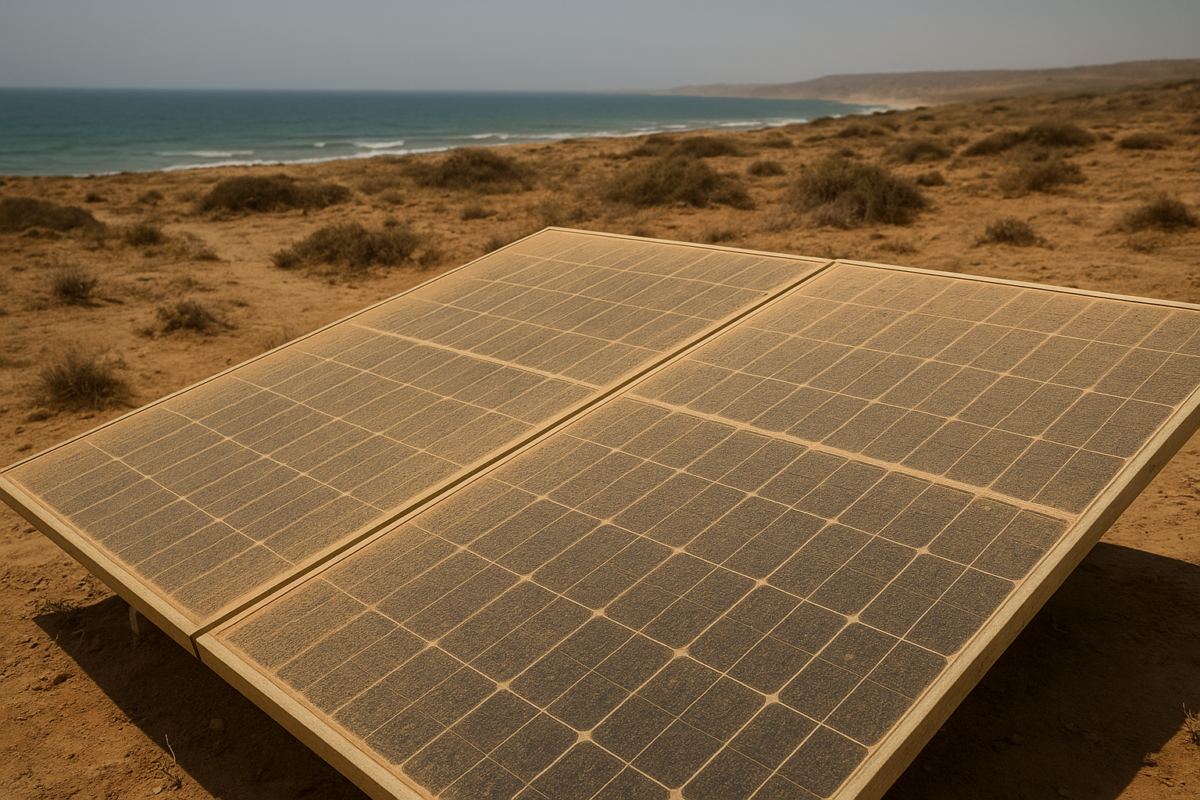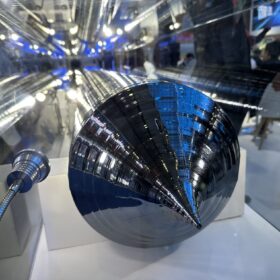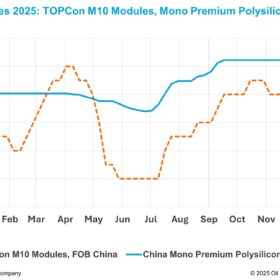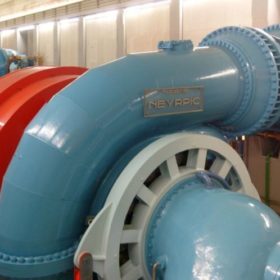A research team led by Saudi Arabia’s Imam Abdulrahman Bin Faisal University has conducted an experimental study on how different dust compositions affect photovoltaic performance. The study examined four dust types—montmorillonite, kaolinite, bentonite, and natural dust—on solar panels operating in arid coastal environments.
“The findings of this study hold practical implications for optimizing PV maintenance in arid coastal regions,” the group explained. “By linking dust composition to degradation mechanisms, stakeholders can prioritize cleaning schedules or select coatings tailored to dominant minerals. For example, hydrophobic coatings may mitigate humidity-driven adhesion in calcium-rich environments, while iron-rich regions might benefit from thermal-resistant materials.”
The experiments were carried out in Jubail, a city on Saudi Arabia’s Persian Gulf coast, classified as BWh (hot desert) under the Köppen climate system. A 20 W polycrystalline PV panel was used for outdoor performance testing between September 9–29, 2025. At maximum power, the panel delivered a current of 1.14 A and a voltage of 17.6 V, with an open-circuit voltage of 21.1 V and a short-circuit current of 1.29 A.
The montmorillonite, kaolinite, and bentonite clays were sourced as commercial mineral powders and sieved to less than 45 μm. Natural dust samples were manually collected from glass surfaces exposed to ambient conditions in Jubail. Dust deposition was performed in seven stages, beginning with a surface density of around 1.0 g/m² and increasing incrementally to approximately 7.0 g/m². Measurements were taken after each deposition stage.
“Mineralogical analysis via SEM-EDX revealed distinct compositional profiles that directly correlate with performance degradation patterns,” the academics said. “Natural dust, characterized by high silica (25.37%) and calcium oxide (30.52%) content, emerged as the most detrimental contaminant, inducing a 48% power loss at a deposition density of 6 g/ m2 through combined light scattering and hygroscopic cementation.”
Calcium-rich dust was found to be especially problematic in coastal conditions, where elevated humidity (40–65% relative humidity) transforms loose particulates into adherent layers resistant to natural cleaning mechanisms. In contrast, montmorillonite’s elevated iron content (62.67%) contributed to thermal degradation, raising the panel surface temperature to 40.4 C and reducing the open-circuit voltage.
“Humidity emerged as a critical amplification factor rather than an independent stressor, reducing efficiency by 15–30% when relative humidity exceeded 60%. This threshold marks a transition from reversible soiling to cemented adhesion, where capillary forces bind dust particles to the PV surface with sufficient strength to resist wind-driven removal,” the academics further explained. “The diurnal analysis revealed that optimal power generation occurs during low-humidity morning hours (8:00–11:30 a.m., efficiency 12–13 %), while afternoon periods experience 20–25 % efficiency losses.”
The team also found that particulate pollution significantly influenced performance degradation, with the Air Quality Index (AQI) showing a stronger negative correlation with efficiency than humidity alone. “At AQI levels exceeding 160, the combined effects of light scattering by airborne aerosols and surface soiling reduced conversion efficiency below 10%, even under moderate dust deposition densities (3–4 g/m2),” they concluded.
Their findings are available in “Experimental and modeling study of dust composition impact on photovoltaic performance in arid coastal environments,” published in the Journal of Materials Research and Technology. Scientists from Saudi Arabia’s Imam Abdulrahman Bin Faisal University, the Egyptian Atomic Energy Authority, and Egypt’s Ain Shams University have participated in the study.
This content is protected by copyright and may not be reused. If you want to cooperate with us and would like to reuse some of our content, please contact: editors@pv-magazine.com.









By submitting this form you agree to pv magazine using your data for the purposes of publishing your comment.
Your personal data will only be disclosed or otherwise transmitted to third parties for the purposes of spam filtering or if this is necessary for technical maintenance of the website. Any other transfer to third parties will not take place unless this is justified on the basis of applicable data protection regulations or if pv magazine is legally obliged to do so.
You may revoke this consent at any time with effect for the future, in which case your personal data will be deleted immediately. Otherwise, your data will be deleted if pv magazine has processed your request or the purpose of data storage is fulfilled.
Further information on data privacy can be found in our Data Protection Policy.